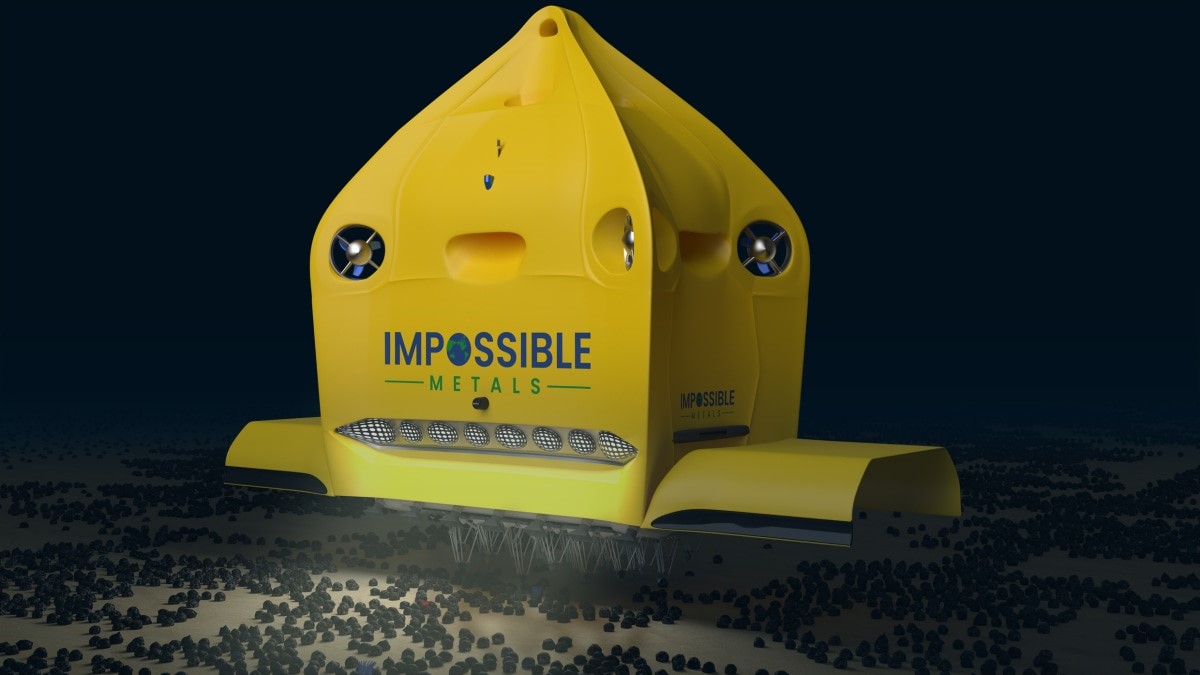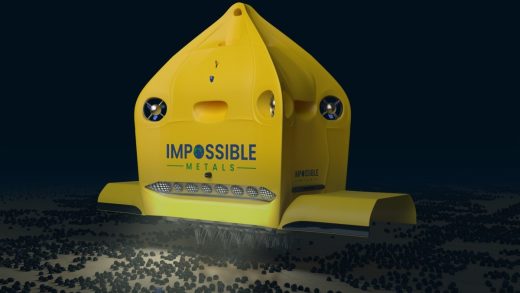How deep-sea mining for EV materials could wipe out tuna populations
The electric vehicle industry is booming, which results in an increased demand for metals, such as lithium, cobalt, and nickel, in order to make the batteries. Mining for these metals often takes place under terrible labor conditions, with disastrous environmental impacts.
And without proper regulations, those problems could spread to new terrain: our oceans.
As demand for electric vehicles grows, manufacturers are facing shortages of batteries’ raw materials. As a result, they’re looking for new places to mine, and the oceans are a blank slate.
While deep-sea mining hasn’t yet been tapped for the metals, nickel and cobalt, these are abundant on the ocean floor, and companies are racing to tap into them. This wouldn’t just pollute the waters and endanger precious ecosystems, but experts say it could have terrible consequences for the tuna population, which would cause massive disruptions to the global food supply chain.
“This is going to be a major threat to biodiversity,” says Daniela Fernandez, founder and CEO of Sustainable Ocean Alliance. “And these industries, they’re just not listening to it. They don’t believe it or, frankly, they’re just covering their ears and their eyes because they’re justifying the profits that will come out of this.”
The race for regulations
In July, the UN-affiliated International Seabed Authority (ISA) gathered in Jamaica to write regulations for deep-sea mining in international waters, a regulatory process that has been underway for the past eight years and will continue until at least 2025.
Mining companies and some countries are pushing the negotiations forward, while regulators and environmentalists are cautioning against any final decisions before more research has been done. While some companies have received exploratory contracts for deep-sea mining, it has never been done on a commercial scale, making regulations that much more important. The next two years will be critical, as mining companies get their plans in place at the same time that regulations are being hammered out.
“We definitely should not move forward with mining due to the lack of data and research that we have on deep-sea ecosystems,” says Fernandez, who founded SOA when she was 19. Since 2014, the organization now has more than 7,000 young leaders in 77 countries working to protect the ocean. She believes that a 10-year moratorium on mining is the best possible outcome of the negotiations, giving researchers more time to study possible negative effects.
But people in the industry think that’s unlikely to happen.
“It is now a question of when—rather than if—commercial-scale nodule collection will begin,” Gerard Barron, CEO of the Metals Company, the most prominent deep-sea mining company, said in a statement. (Nodules are the mineral clumps that mining companies plan to extract from the sea floor.)
Deep-sea mining’s threat to tuna
If mining does begin in international waters, it will be in the Clarion Clipperton Zone (CCZ), a vast swathe of the Pacific Ocean spanning 1.7 million square miles between Mexico and Hawaii.
Changing ocean temperatures due to climate change are expected to increase the population of migratory tuna species in the CCZ over the coming decades: bigeye by 10% to 11%, skipjack by 30% to 31%, and yellowfin by 23%. Deep-sea mining in this area could have a disastrous effect on these three species; combined, they make up a $5.5 billion industry and are a staple protein source for millions of people worldwide.
A study published by the journal Nature in July found that an onslaught of mining waste and debris could end up in the tunas’ ecosystems. Sediment plumes could prevent feeding or visual communication, potentially toxic metals could be absorbed by species, and noise and light pollution could disrupt behavior.
The CCZ currently contains 1.1 million square kilometers of deep-sea mining exploration contracts. These contracts don’t yet give permission to exploit metals, though two companies that have these contracts have already used dredging machines to conduct tests. These machines inject water onto the seafloor and then vacuum up all the sediment. It’s incredibly disruptive to the ecosystem, meaning even these initial tests could be negatively impacting tuna and other species in the CCZ.
Searching for alternatives
One company, Impossible Metals, is offering an alternative.
Using an autonomous underwater vehicle, its mining machinery uses cameras and AI to determine whether there’s life on each rock that has potential for harvesting.

“If there is life there, we skip it, we leave it behind,” says Oliver Gunasekara, cofounder and CEO of Impossible Metals. “If there isn’t, we harvest it with a robotic arm, put it into the payload, and then once the payload is full, we use the battery to float to the surface where the vehicle is recovered.”
The company says that their selective-harvesting technology also allows them to minimize problems with biodiversity loss, sediment pollutants, and noise pollution, beyond the minor sediment disruption that comes from picking the rocks up.
But the technology they’re developing doesn’t seem to be common among the deep-sea mining companies, and there’s a general lack of industry-wide attention on impending environmental disruption.
Many of the biggest manufacturers that require these metals for production have stated that they can do so without the onset of deep-sea mining—that includes smartphone companies in addition to car manufacturers.
Google, BMW, AB Volvo, and Samsung are among a group of 35 companies that have called for a moratorium on deep-sea mining, arguing that rather than mining new materials, manufacturers should better utilize recycling technologies.
Not everyone agrees.
“We want to see strong regulations,” said Gunasekara. “But we are obviously opposed to bans . . . I would much rather people say, ‘We want to minimize biodiversity loss, we want to avoid sediments, avoid noise, etcetera,’ and allow companies like ours to innovate. But banning a location doesn’t allow for innovation. And remember, the ocean is 71% of the surface area of our planet. In my view, we will not get to net zero without huge quantities of critical minerals, and trying to get them on land is going to be incredibly challenging.”
(11)


